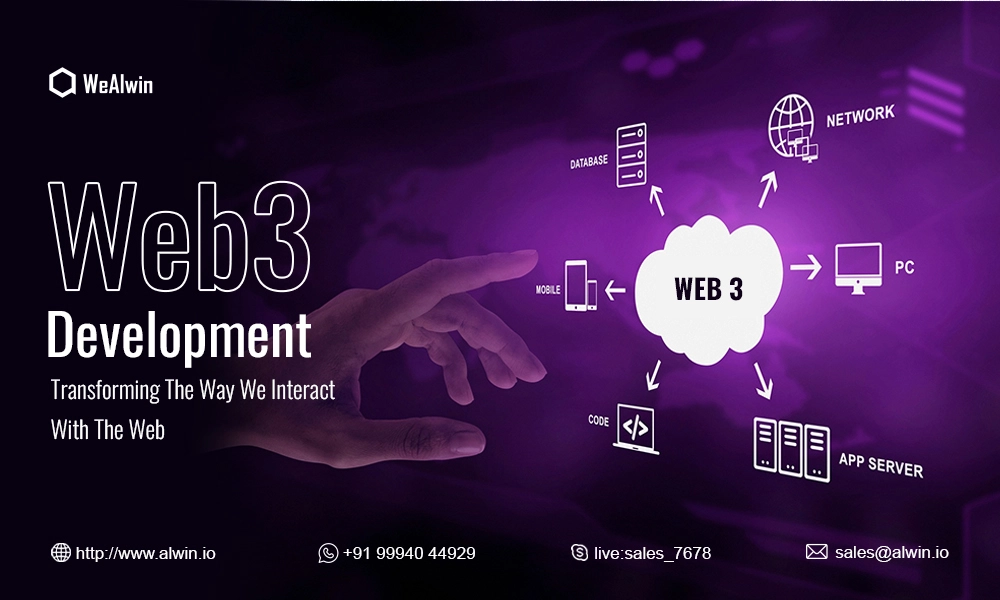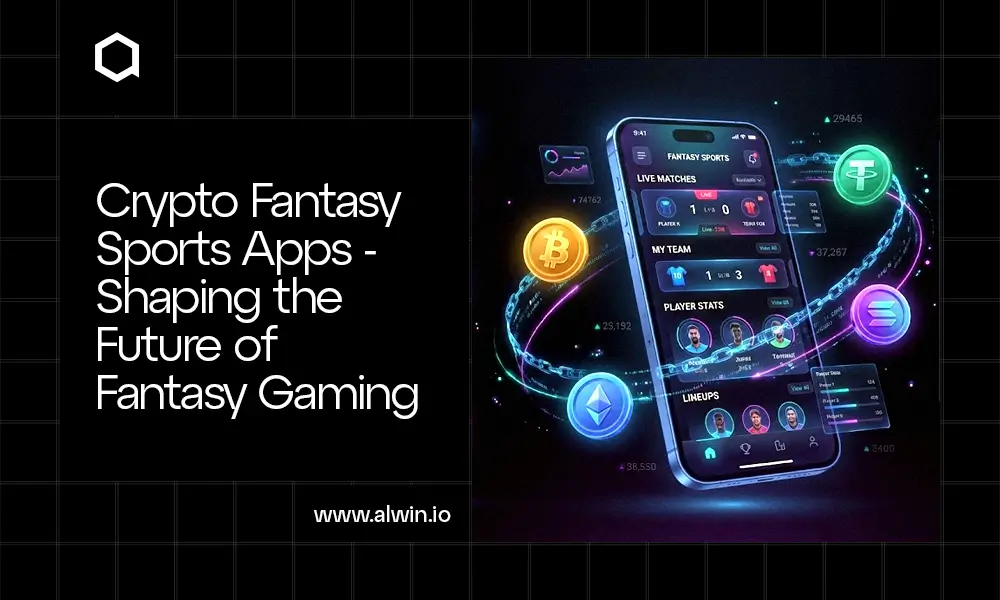Are you tired of the limitations of the traditional web?
The centralized control of user data and content, the lack of privacy and security, and the dependence on intermediaries?
Well, get ready for a revolutionary new web experience with Web3 development!
The modern world is shifting to decentralization and when web3 was born. Which changes the way we utilize the internet in the future. It’s built on top of blockchain technology which offers more secure, decentralized, and trustless interactions between users. Imagine the future of the web will have full control over your data and content, where you transact from data to digital currency peer-to-peer without intermediaries.
Users can interact with others more securely and privacy becomes possible through the use of decentralized applications (dApps) which run in a p2p network. Plus, it has the potential to disrupt traditional business models and create a more transparent and democratic web experience.
Join the Web3 revolution and discover a new world of possibilities for the web. The future becomes completely decentralized, and it just gets started with Web3 development.
The Emergence of Web3
The journey of the internet started in the early 90s. With the advent of web2, its become more interactive and user-friendly, even though it's interactive in nature its have some limitations.
Let’s enter into the world of web3.
Web3 is the next generation of the internet, which is constructed on a blockchain network. It's a distributed ledger system which makes it ideal for web3 development. Because it's for decentralization.
While the first Bitcoin was created in 2009, the start of web3 development also begins and Bitcoin was the first application of blockchain technology, and it act as a basement for all other cryptocurrencies and blockchain-based projects over time, developers began to realize the potential of blockchain technology beyond cryptocurrencies.
Web3 Technologies
Web3 technologies are just a starting point for the decentralized web which enables secure and private communication between users(encrypted).
Here are some key potentials for web3 technologies:
Smart Contracts
Smart contracts are self-executing contracts and it executes the process automatically with the terms of the agreement between buyer and seller with the help of codes written. smart contracts are transparent, decentralized, and secure, making them ideal for web3 development. It executes the transactions automatically without any interaction of middlemen or any centralized organizations, which reduces operating costs and increases efficiency.
Decentralized Applications (DApps)
The apps will not depend on any centralized servers and work on a distributed network called the blockchain. DApps are safer and more independent than traditional web2 applications.
Also enabling p2p transactions and data sharing creates new opportunities for innovation and collaboration.
Examples of DApps include decentralized social networks, marketplaces, and voting systems.
InterPlanetary File System (IPFS)
IPFS is a protocol and network that creates a peer-to-peer way of storing and sharing hypermedia in a distributed file system. It offers a more effective and decentralized method of file sharing, decreasing reliance on centralized servers and middlemen. IPFS also guarantees data security and privacy as files are encrypted and only accessible by authorized users.
Cryptocurrencies
Cryptocurrencies are digital assets that use cryptography techniques to secure transactions of digital assets and control the creation of new units. Cryptocurrencies play an important role in the growth of web3 development and provide value exchange between users. They run on a decentralized system which is a secure way of storing and exchanging value, which will reduce the dependence on traditional financial institutions.
Web3 Infrastructure
Web3 infrastructure is the backbone of the decentralized web, providing the necessary tools and frameworks for Web3 development.
Here are some key components of Web3 infrastructure and their impact:
Blockchain
Blockchain acts as a backbone for the underlying technology behind web3 infrastructure. It provides a decentralized ledger for transactions and data storage. Blockchain technology also enables the creation of decentralized applications, smart contracts, and cryptocurrencies, which are key components of web3.
Proof-of-Work (PoW) vs. Proof-of-Stake (PoS)
| Consensus Mechanism |
Proof-of-work |
Proof-of-stake |
| Validation Method |
Miners solve complex mathematical problems |
Network validators stake their own cryptocurrency as collateral |
| Energy Efficiency |
High energy consumption and cost |
More energy-efficient than PoW |
| Scalability |
Limited scalability due to high energy consumption and slow validation times |
More scalable than PoW |
| Security |
Highly secure due to the computational power required to solve mathematical problems |
Secure due to the risk of losing staked cryptocurrency |
| Adoption |
Widely adopted by popular blockchains like Bitcoin |
Increasingly adopted by newer blockchains and more suitable for Web3 development |
Layer 1 vs. Layer 2 solutions
| Layer 1 Solutions |
Layer 2 Solutions |
| Examples: Bitcoin, Ethereum |
Examples: Lightning Network, Plasma Network |
| Foundational blockchain infrastructure |
Built on top of Layer 1 to enhance user experience |
| Limited scalability |
Enable faster and cheaper transactions |
| Limited interoperability |
Enable interoperability between different blockchains |
Web3 Development Frameworks and Tools
Ethereum
Ethereum is a popular blockchain platform for Web3 development that offers benefits like smart contracts, and decentralized applications, and also has a large developer community. Ethereum development tools include Remix, Truffle, and Solidity.
Polkadot
Polkadot is an alternative Web3 development platform that offers unique features like interoperability between different blockchains and customizable governance models.
Consult with our business experts to Build your own Web3 Platform! Chat with us on WhatsApp
Solidity
Solidity is a programming language used to write smart contracts for Ethereum DApps. Its benefits include simplicity, security, and compatibility with other languages.
Remix
Remix is an Ethereum development environment that offers features like contract debugging, gas optimization, and a built-in compiler.
Truffle
Truffle is an Ethereum development framework that provides benefits like smart contract compilation and deployment, automated testing, and a suite of development tools.
Web3 Development Best Practices
Secure coding practices: Developers must follow secure coding practices to ensure the security of decentralized applications. This includes using multi-factor authentication, avoiding storing sensitive information on-chain and using trusted open-source libraries.
Testing and deployment: Testing and deployment are critical steps in Web3 development to ensure the quality and reliability of DApps. Developers can use automated testing tools like Truffle to test smart contracts and ensure that function as intended. They can also use deployment tools like Remix to deploy their DApps to the blockchain network.
Community involvement: Community involvement is crucial in Web3 development to foster collaboration, share knowledge, and build a strong ecosystem. Developers can participate in forums, attend meetups, and contribute to open-source projects to engage with the community and benefit from its collective knowledge and experience.
Web3 Use Cases
Web3 technology has opened up a world of possibilities, with various use cases that have the potential to revolutionize different industries. For instance, decentralized finance (DeFi) is one of the most popular use cases of Web3, which has the potential to disrupt the traditional finance industry.
Web3 Future
The future of Web3 is nothing short of exciting and mind-blowing! We are witnessing a technological revolution that has the potential to transform industries, enable new business models, and create revenue streams that we never thought possible.
Web3 is more than just a buzzword - it represents a paradigm shift in the way we interact with the internet and the world around us.
With its decentralized and trustless infrastructure(no need to be dependable on 3rd party networks or servers), Web3 promises to create a more inclusive and fair web that is not controlled by a few dominant players. As we look towards the future, the possibilities of what Web3 can achieve are endless.
One thing is for sure: staying ahead of the curve is going to be critical. The Web3 ecosystem is rapidly evolving, and to succeed, you need to be aware of the latest developments and trends. This means keeping up to date with new technologies, development frameworks, best practices, and community engagement.
Final Thoughts
Web3 development is an exciting frontier that has the potential to transform industries and society. With its unique features like decentralization, transparency, and security, Web3 offers new opportunities for businesses and developers to create innovative solutions and revenue streams.
However, there are also challenges like scalability, security, and regulatory issues that need to be addressed. Despite these challenges, the future of Web3 development looks bright, and it is important for businesses and developers to embrace it.
To leverage the potential of Web3, we encourage businesses and developers to explore Web3 technologies, best practices, and development frameworks and tools.



